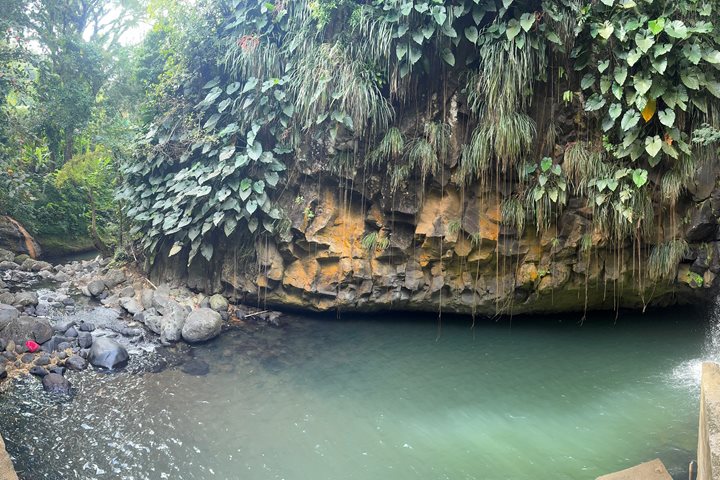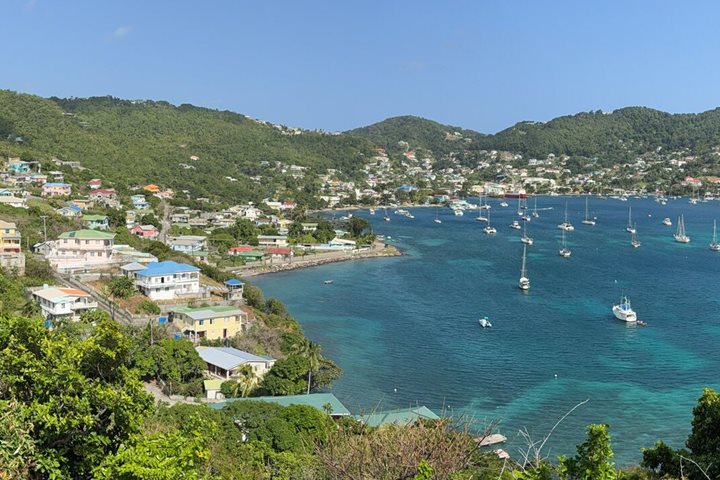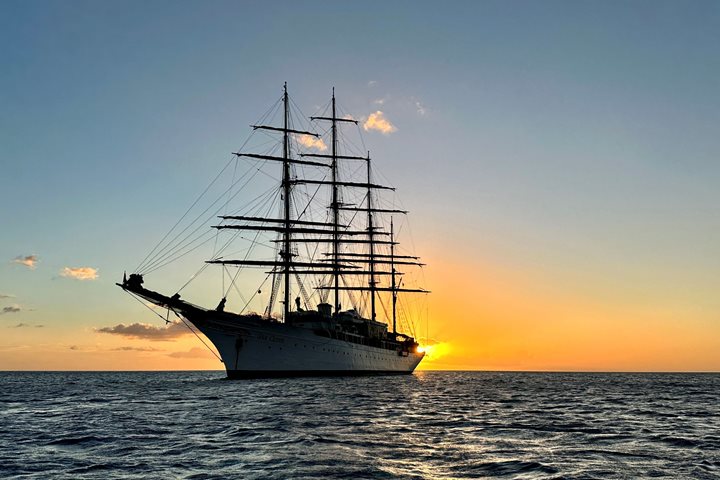After a lovely barbecue dinner on the Lido Deck, we left our anchorage at Cabrits Head, Dominica, and motored to the lovely harbor of the main city in the Iles des Saintes, named by Columbus on his second voyage in November 1493. The sun rose over Terre Haut at 6:20am and we had calm seas. We dropped anchor at 7:20am in 33 meters of water about one mile from the center of town.
The capital of “The Saints” is named Bourg, or “city” – imaginative! The town’s two most imposing buildings are a lovely Catholic church (“Stella Maris”) and a typical French town hall, proclaiming “Liberté, Egalité and Fraternité” -- ideals emerging from the French Revolution. The archipelago consists of seven volcanic islands but only three have all year-round residents. These seven islands along with the much larger island of Guadeloupe comprise the French “Départment d’Outré Mer.” These islands are a part of France. The inhabitants are French citizens, vote in all elections, and use the euro.
We arrived at the justifiably impressive Fort Napoleon by 8:40am and were the first to enter the grounds. I gave a talk about the “Battle of the Saints,” the largest naval battle to have taken place in the waters of the Americas. Approximately 300 vessels were involved in the naval melee. The battle was fought between the British and the Franco-Spanish fleet. The latter were planning an assault on the British island of Jamaica. The English won, wreaking horrific casualties on the French. The defeat of the Franco-Spanish fleet may have contributed to the American colonists coming to the peace table in 1783. Our walk through the fort allowed us to see many large land iguanas lolling about, soaking up the sun. The fort is also a garden for a great number of cacti species.
The original 18th century French settlers on the island were indentured servants, largely of Breton stock, famous in mainland France for their boat building and fishing skills. After having secured their freedom from debt, they did what they did in Brittany and became fishermen and boat builders. Today the primary industry is tourism from the larger island of Guadalupe. The cost of living is high as one might expect since everything has to be shipped in by air and ship. Some of our intrepid group also took advantage on the snorkeling option across the bay.
After lunch we had a swim from the ship, which was cut a tad short by a sudden squall. After a photo workshop, we motored out of this lovely bay just after 3:30pm on our way south to Bequia in St. Vincent and the Grenadines. Tonight, there was an open house on the ship, and we all had the opportunity to see the original cabins designed and decorated by Marjorie Merriweather Post – elegant is the word.









